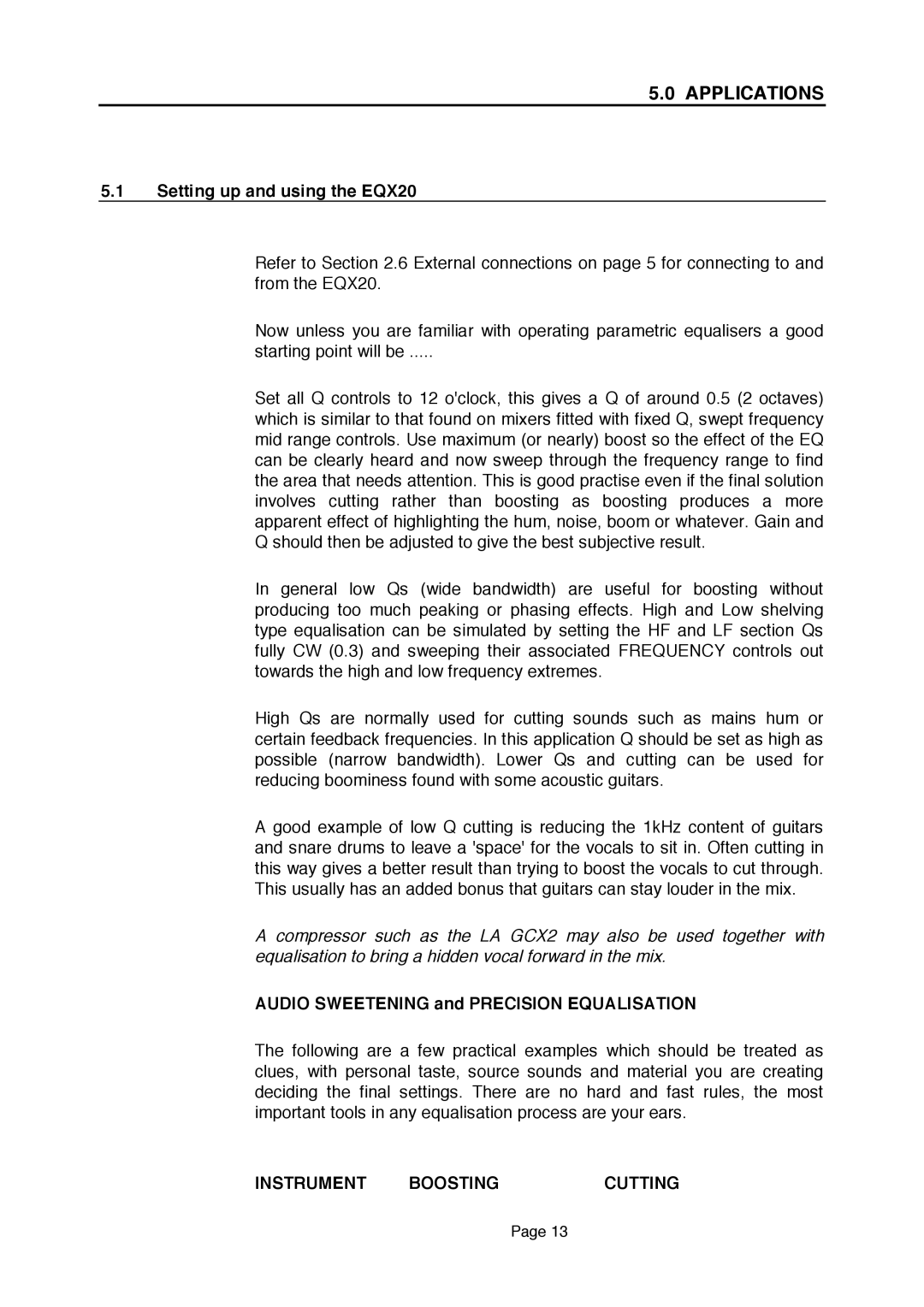EQX20 specifications
The LA Audio Electronic EQX20 is a sophisticated dual-channel graphic equalizer designed for professionals in the audio industry. Known for its exceptional sound quality and versatility, the EQX20 has become a go-to tool for live sound engineers and studio professionals alike.One of the main features of the EQX20 is its 20 bands of equalization across the 20Hz to 20kHz frequency spectrum. This extensive range allows users to make precise adjustments to the audio signal, shaping the sound to suit any environment or performance. With 3 different filter types—Shelf, Peak, and Notch—the EQX20 gives users complete control over their sound, enabling them to boost or cut frequencies with remarkable accuracy.
A standout characteristic of the EQX20 is its dual-channel operation, which enables simultaneous processing of two separate audio signals. This feature is essential for multitasking in live settings, allowing engineers to manage different sources without the need for multiple units. The intuitive layout of the EQX20 further enhances its usability, with clearly labeled controls and LED indicators for each frequency band, making adjustments quick and effortless even in complex situations.
The EQX20 utilizes high-quality components, contributing to its low noise and minimal distortion. This ensures that the integrity of the audio signal is maintained, which is crucial in professional environments where clarity and precision are paramount. The unit is also built with durability in mind, featuring a rugged chassis that can withstand the rigors of on-the-road use.
Another key technology implemented in the EQX20 is the inclusion of a bypass switch. This feature allows users to quickly compare the processed signal with the original audio, facilitating real-time adjustments and ensuring optimal sound quality.
Additionally, the EQX20's comprehensive metering provides valuable feedback on signal levels, allowing users to monitor their adjustments effectively. This is particularly beneficial during live performances, where quick and accurate sound control is essential.
Overall, the LA Audio Electronic EQX20 is a powerful tool for audio professionals seeking to enhance their sound mixing capabilities. With its precise equalization, dual-channel functionality, and robust design, the EQX20 stands out as an indispensable asset in any sound engineer’s toolkit.

